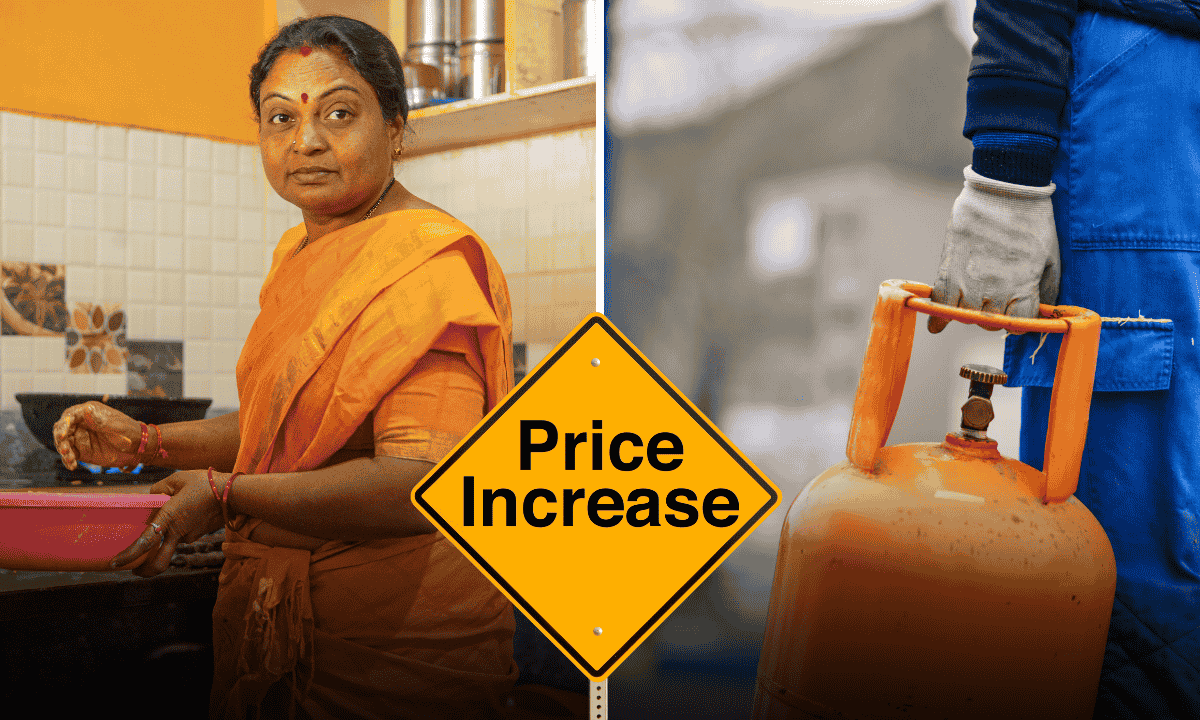LPG Gas Cylinder Price Hike ₹50: New Rates Effective from April 8, Government Announces
The Indian government announced a ₹50 hike in domestic LPG gas cylinder prices effective April 8, 2025. Check updated rates for subsidized and non-subsidized users.

In a significant move impacting households nationwide, the Indian government announced a ₹50 price hike for domestic LPG gas cylinders on Monday, April 7, 2025. The new rates will take effect from Tuesday, April 8, 2025, affecting both subsidized and non-subsidized consumers.
Union Petroleum Minister Hardeep Singh Puri confirmed the decision, stating the hike aligns with global fuel price adjustments and aims to balance subsidy burdens. This marks the first domestic LPG price increase in 2025, adding pressure to household budgets amid rising inflation.
Also Read: Gas Cylinder Price Alert: Latest LPG Rates in AP & Telangana
Table of Contents
Impact on Subsidized and Non-Subsidized Customers
- PMUY Beneficiaries: Under the Pradhan Mantri Ujjwala Yojana (PMUY), subsidized LPG cylinder prices will rise from ₹500 to ₹550 per 14.2 kg cylinder.
- Non-Subsidized Users: Prices for regular domestic LPG cylinders will increase from ₹803 to ₹853 in major cities like Delhi.
The PMUY scheme, launched to provide clean cooking fuel to below-poverty-line (BPL) families, now supports over 100 million households. However, the latest hike raises concerns about affordability for low-income groups.
Recent Changes in Commercial LPG Prices
The announcement follows a ₹41 reduction in commercial LPG cylinder rates on April 1, 2025. For example, a 19-kg commercial cylinder in Delhi dropped from ₹1,803 to ₹1,762. This relief primarily benefits restaurants, hotels, and businesses relying on bulk LPG usage.
Excise Duty Hike on Petrol and Diesel
Alongside the LPG price revision, the government raised excise duties on petrol and diesel by ₹2 per litre, effective April 8. However, Minister Puri clarified that retail fuel prices will remain unchanged for consumers.
- Petrol excise duty: Increased to ₹13 per litre.
- Diesel excise duty: Up to ₹10 per litre.
The move aims to stabilize revenue streams without directly burdening the public.
Why the LPG Gas Cylinder Price Hike ₹50 Matters
- Household Budget Strain: With 90% of Indian households using LPG for cooking, the ₹50 hike adds ₹600 annually per cylinder.
- Inflation Concerns: Rising fuel costs could trigger broader price increases for essential goods and services.
- Subsidy Balancing Act: The government subsidizes nearly ₹200 per domestic cylinder; this hike partially offsets rising import costs.
Minister Puri emphasized that fuel prices are reviewed every 2-3 weeks, hinting at potential adjustments based on global crude oil trends. Consumers are advised to check updated rates via official oil company portals or local distributors.
The LPG gas cylinder price hike ₹50 underscores the government’s tightrope walk between fiscal stability and public welfare. With new rates effective April 8, households nationwide must brace for higher cooking fuel costs amid ongoing economic challenges.
What is the new price of domestic LPG cylinders after the ₹50 hike?
The LPG gas cylinder price hike ₹50 raises subsidized PMUY rates to ₹550 (from ₹500) and non-subsidized cylinder prices to ₹853 (from ₹803) in major cities like Delhi.
When does the LPG gas cylinder price hike take effect?
The revised prices are effective from April 8, 2025, as announced by the Indian government on April 7, 2025.
How does the ₹50 hike impact Pradhan Mantri Ujjwala Yojana (PMUY) users?
PMUY beneficiaries, primarily low-income households, will now pay ₹50 more per cylinder, with prices rising from ₹500 to ₹550. Over 100 million families under the scheme are affected.
Why did the government raise LPG prices by ₹50?
The hike aligns with global fuel market trends and aims to offset rising import costs while balancing subsidy burdens. The government emphasized continued support for vulnerable groups.
Are petrol and diesel prices also increasing in April 2025?
While excise duty on petrol and diesel rose by ₹2 per litre, retail prices remain unchanged for consumers. The adjustment focuses on revenue stabilization, not public burden.
Stay Updated: Follow Munsif for real-time news on fuel prices, subsidies, and policy changes.
